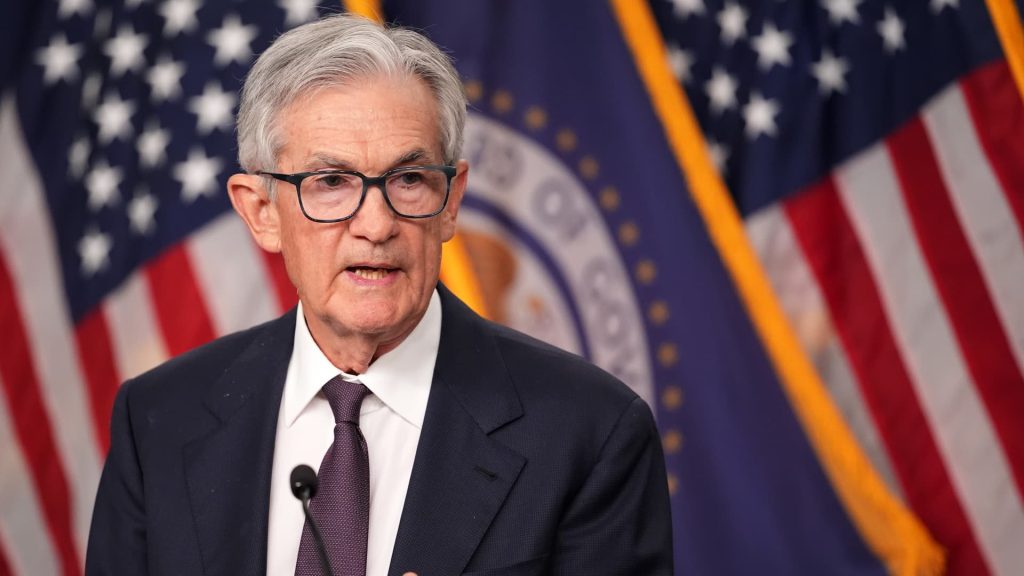Federal Reserve officials expressed significant concerns over tariffs potentially exacerbating inflation during their recent meeting. The minutes from the May 6-7 Federal Open Market Committee meeting detailed members’ cautious approach to monetary policy amid rising uncertainties surrounding fiscal and trade policies. Although they had reservations about inflation trends, they maintained a steady course on interest rates, signaling a watchful wait for clearer economic indicators.
| Article Subheadings |
|---|
| 1) Concerns Over Inflation and Tariffs |
| 2) Stability in Economic Growth and Employment |
| 3) Reaction from Markets and Traders |
| 4) The Fed’s Long-Term Policy Framework |
| 5) The Path Ahead for Monetary Policy |
Concerns Over Inflation and Tariffs
During the Federal Open Market Committee meeting earlier this month, members raised alarms regarding the impact of tariffs on inflation rates. Officials expressed worries that such tariffs could create a challenging landscape for effective interest rate policy, complicating the already uncertain economic outlook. The meeting minutes, released on Wednesday, emphasized that trade policy was a significant concern and that uncertainty surrounding it has increased since the last policy adjustment. In fact, the minutes highlighted how continuing to face potential inflationary pressures could necessitate difficult trade-offs in the future.
Stability in Economic Growth and Employment
Despite the concerns regarding inflation and fiscal policies, the Federal Reserve affirmed that the economic growth remains robust. Officials described the current labor market as “broadly in balance,” although they acknowledged emerging risks that could lead to future weakness. Notably, consumer spending has continued, demonstrating resilience in the face of external pressures. The Fed opted to keep its benchmark federal funds rate steady within a target range of 4.25%-4.5%, suggesting confidence in the existing economic conditions.
Reaction from Markets and Traders
In the days following the Federal Reserve meeting, the markets exhibited a response reflective of the cautious sentiment conveyed by officials. Futures traders have adjusted their expectations, now almost entirely ruling out a rate cut until at least the Fed’s September meeting. This shift comes amidst ongoing trade discussions, particularly between the United States and China, where tariffs have been a contentious topic. Following the meeting, both nations temporarily agreed to lower some of the most disruptive tariffs, which in turn sparked optimism on Wall Street. Nonetheless, bond yields have continued to rise, reflecting ongoing apprehensions about potential inflation.
The Fed’s Long-Term Policy Framework
The Federal Reserve also reviewed its long-term policy framework during the May meeting, particularly their strategy known as “flexible average inflation targeting.” This approach previously allowed for inflation to exceed the 2% target to promote a more inclusive labor market. However, officials conveyed that this strategy may have diminished benefits in the current environment characterized by substantial risks of inflationary shocks. The committee noted that they remain committed to their inflation goal, seeking a policy framework that could withstand various economic environments.
The Path Ahead for Monetary Policy
Looking forward, Federal Reserve officials maintain that they will remain vigilant, waiting for more clarity regarding fiscal and trade policies before considering any lower rate actions. The uncertainty surrounding these areas complicates their ability to navigate between fostering growth and keeping inflation in check. As policymakers evaluate economic indicators closely, they continue to express concern about the dynamism of monetary policy in light of evolving external circumstances. The Fed aims to strike a balance that ensures the long-term health of the economy while managing immediate risks.
| No. | Key Points |
|---|---|
| 1 | Federal Reserve officials expressed concerns about tariffs and inflation during their May meeting. |
| 2 | Economic growth is currently stable, fostering cautious optimism in the labor market. |
| 3 | Markets reacted by reducing expectations for interest rate cuts until September. |
| 4 | The Fed’s long-term policy framework is under review amid concerns of inflationary shocks. |
| 5 | Officials remain committed to a cautious approach until economic indicators are clearer. |
Summary
In summary, the recent Federal Reserve meeting underscored a tension between rising inflation concerns due to tariffs and the necessity for economic vigilance. As officials maintain their current interest rate policy, their focus shifts toward monitoring evolving fiscal and trade policies. The path forward entails maneuvering between encouraging growth and preventing inflation from surpassing acceptable levels, thus highlighting the complex landscape policymakers must navigate.
Frequently Asked Questions
Question: What are the current interest rates set by the Federal Reserve?
The Federal Reserve has maintained its benchmark federal funds rate in a target range of 4.25%-4.5% as of their most recent meeting.
Question: Why are tariffs a concern for the Federal Reserve?
Tariffs are a concern because they can lead to increased costs for goods, thereby contributing to inflation and complicating monetary policy decisions.
Question: What is flexible average inflation targeting?
Flexible average inflation targeting is a strategy that allows inflation to temporarily exceed the 2% target to promote more inclusive labor market gains.
